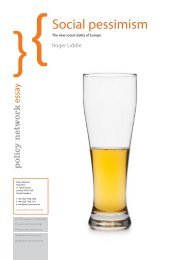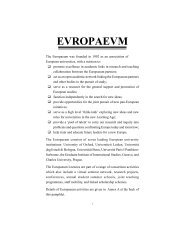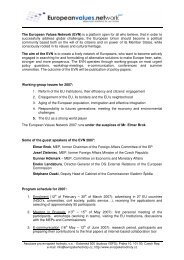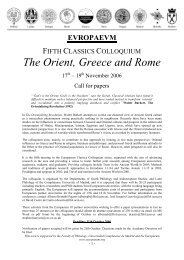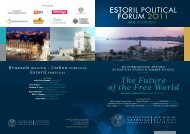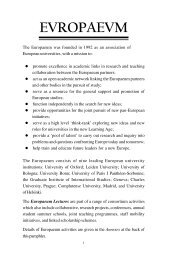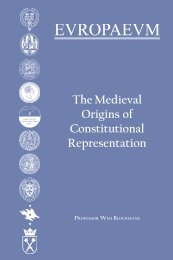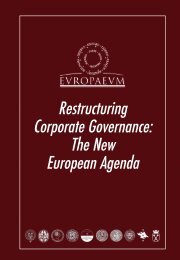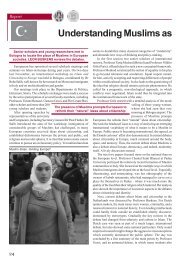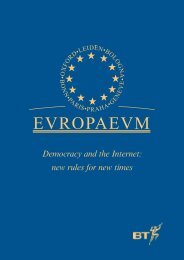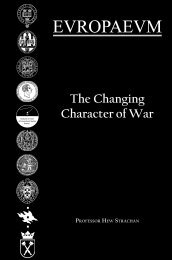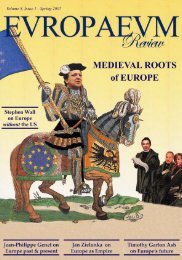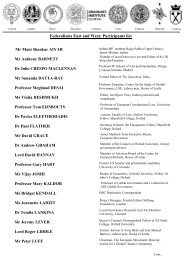Authors Iain Begg | Gabriel Glöckler | Anke Hassel ... - The Europaeum
Authors Iain Begg | Gabriel Glöckler | Anke Hassel ... - The Europaeum
Authors Iain Begg | Gabriel Glöckler | Anke Hassel ... - The Europaeum
You also want an ePaper? Increase the reach of your titles
YUMPU automatically turns print PDFs into web optimized ePapers that Google loves.
that the Council obtains the consent of the Parliament for the approval of<br />
the financial perspective.<br />
<strong>The</strong> overall limit to the size of the budget is decided by unanimity in the<br />
Council, without the participation of the other Community institutions.<br />
<strong>The</strong> current limit is 1.24% of the Union’s GNI. However the present size of<br />
the budget, in payment appropriations, is less than 1% of GNI (0.89% in<br />
2009), leaving a considerable amount of head-room below the own<br />
resources limit. In fact the annual budget has declined in size as a<br />
proportion of GNI since 1993 when it was 1.21%, and actual spending has<br />
been considerably lower than that foreseen by the annual budgets. In<br />
nominal terms of course there has been a steady increase in the size of<br />
annual budgets, reaching €134 billion in 2009 (commitment<br />
appropriations). <strong>The</strong> EU budget is therefore at the same time small in<br />
relation to public spending in the Union (approximately 2%) but quite<br />
substantial in nominal terms.<br />
<strong>The</strong> resources required to implement the agreed expenditure, so-called<br />
“own resources”, consist mainly of transfers from the member states based<br />
on the size of their gross national incomes. Traditional own resources,<br />
that is to say customs duties and certain agricultural duties as well as the<br />
VAT- based own resource, now account for only 33% of the required<br />
resources, the remainder coming from the GNI-based resource. Thus only<br />
a relatively small proportion of the resources needed to meet planned<br />
expenditure come automatically to the Union and are therefore “own<br />
resources” in the strict sense.<br />
<strong>The</strong> current structure of the EU budget<br />
Expenditure<br />
It is a well-known fact that, however the budget figures are presented,<br />
around 80% of the budgetary funds go to finance agricultural spending<br />
and cohesion policy. In the 2009 budget, agriculture, fisheries and rural<br />
development accounted for 42% of commitment appropriations. Cohesion<br />
policy amounted to a further 36%.<br />
It is certainly true that the Union has made an attempt to reduce spending<br />
on the Common Agricultural Policy over several years. In the 2008 budget<br />
for instance narrow agricultural expenditure was the only major budget<br />
line to decrease over the previous year. Indeed, expenditure on agriculture<br />
in the current financial framework is expected to increase in nominal<br />
Chapter 4 – Alan Mayhew 65



